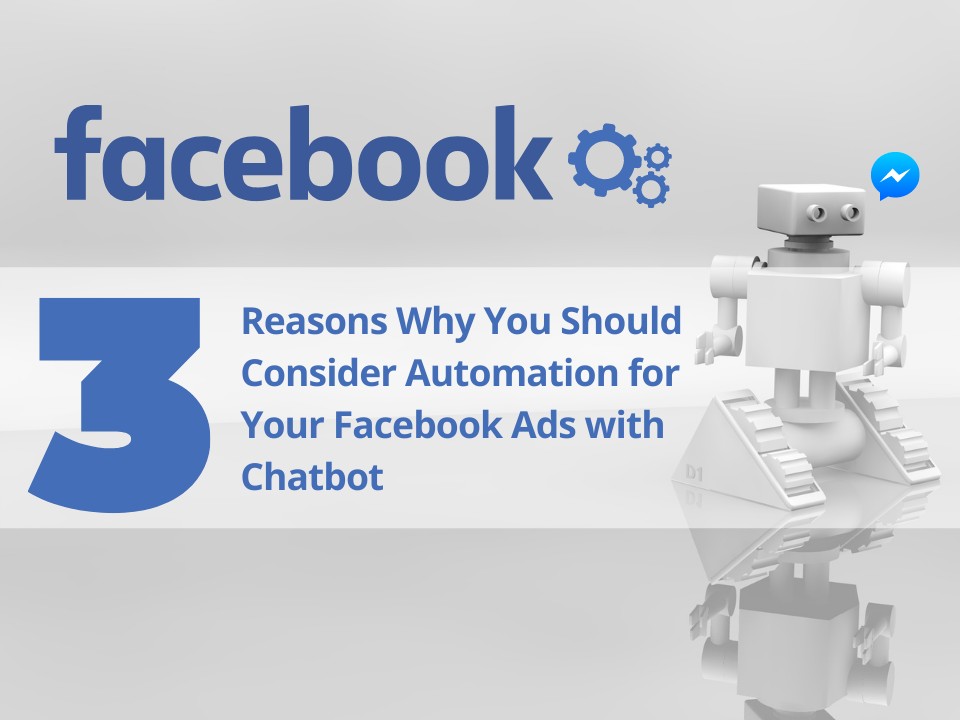
How to setup a Facebook Messenger chat plugin on your website in 10 Minutes
June 14, 2021What's a Customer Journey Map and Why Should You Care?
The customer journey map is the customer’s path from not knowing about your business to becoming a customer. It goes through three stages: awareness, consideration, and decision.The customer experience at each stage affects their likelihood of buying or not. If you want to increase revenue for your business, it is important to understand what customers are going through at these three stages and how that will affect marketing efforts.
In this blog post, we will discuss the customer journey and how it impacts marketing strategies as well as give examples of companies that have used customer-journey mapping successfully!
Let's Get Started
The 3 stages in the customer journey are Awareness, Consideration and Decision.
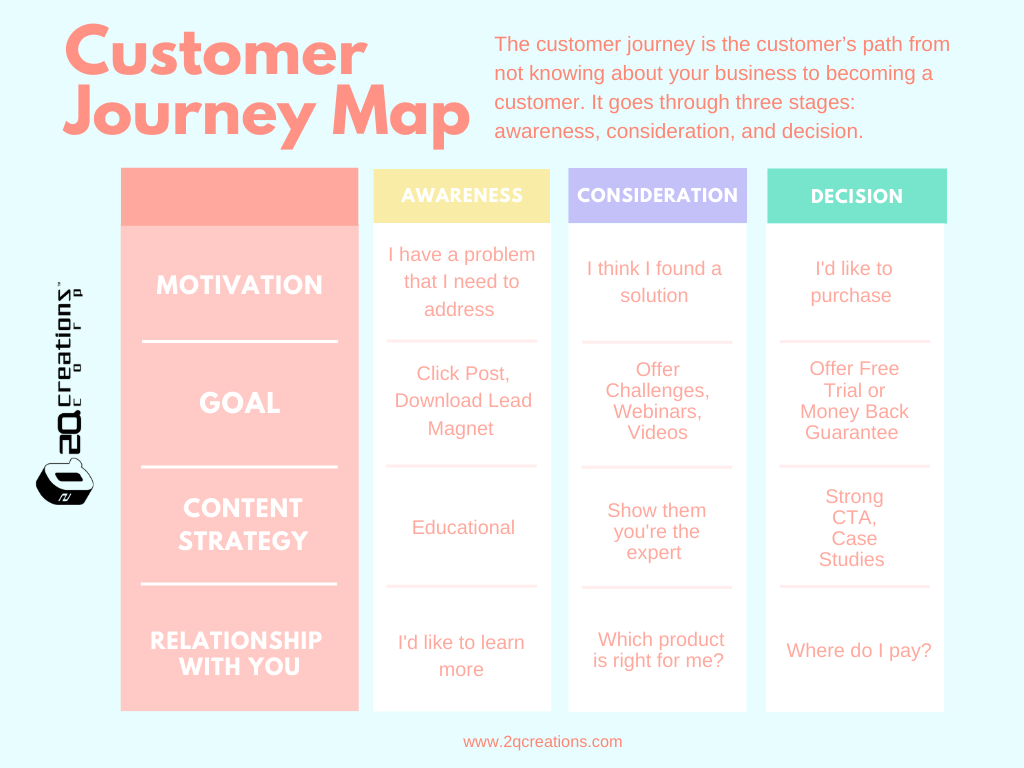
Stage 1: Awareness Stage
The first stage of the customer journey map is awareness, the buyer is experiencing a problem or symptoms of pain, and they want to take some measures to stop it from happening. Many people go online looking for information to help them better understand, define, and come up with a name for their concerns.Example: How do I sleep better at night?
So, how do you market to these potential buyers at this early stage? One way is by addressing the pain points they have. You also want to build your brand's awareness while doing so. Keyword optimization lets you show up on the first page of search results. Advertising on social media related to your avatar's specific pain points will pique their interest.
The awareness stage marks the time when you are trying to establish rapport with your audience. This is because they may feel more hesitant to invest in your brand simply because they do not know much about it at this point if they're considered as "cold traffic"
The content you put out should focus on solving the problems your audience is facing. This is more authentic than just trying to sell your product or service.
Create blog posts, ebooks, white papers, and editorials that cover the problems your customers are facing. Content that is educational and informative will generally be more useful for buyers. If you can help them understand what they're looking for sooner, they'll be more likely to continue the buyer's process with you in mind.
Blog Post Idea: 5 ways to improve your sleep at night
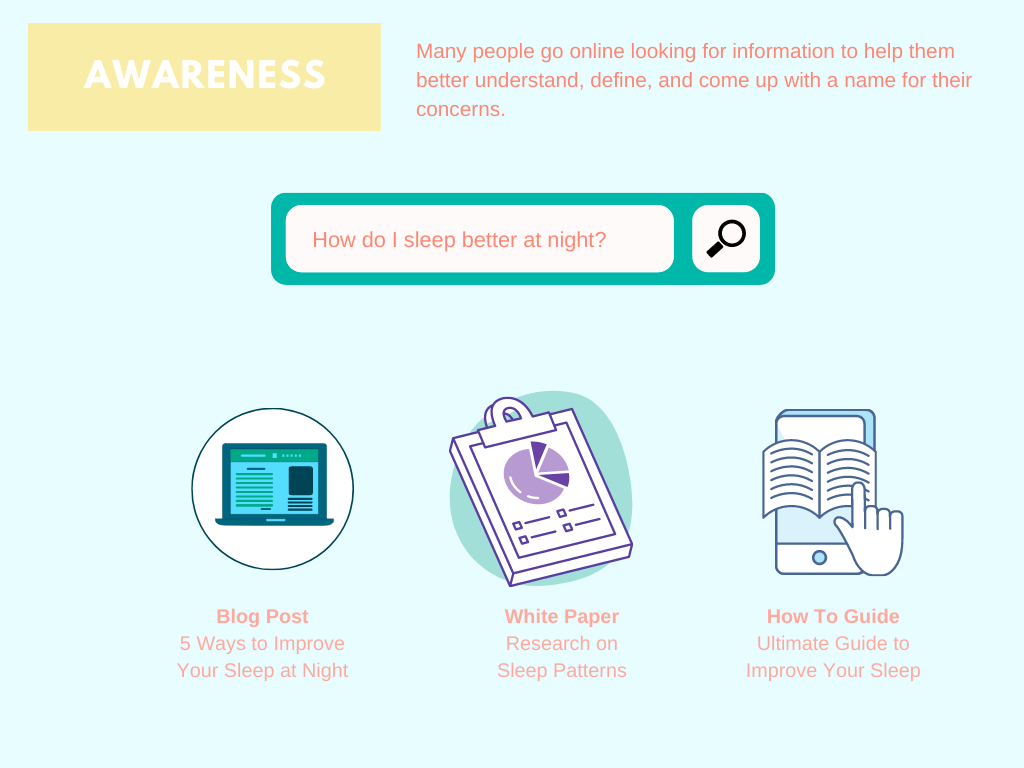
Action Item:
Brainstorm with your team and list 5-10 challenges that your prospects are facing, then create a piece of educational content to address the issue. Want to engage the reader? You can ask them to subscribe to your newsletter or you could invite them to read an article that provides more information about your solution.Stage 2: Consideration Stage
The second stage of the customer journey map is Consideration. Potential customers enquiring about your business or service have already resolved their issue by naming the problem they want to address.This is where buyers will have to do the hard work of comparing & contrasting all the most successful methods available to their problem.
When considering the purchase of a product, customers often have specific expectations in mind. When these expectations are not met or are not made clear before the sale, customers may experience disappointment or resentment.
A good way to minimize these feelings of disappointment is by making sure potential customers know what to expect from your company before they make their purchase decision.
You need to be providing content for your audience that tells them the benefits of your product. You're no longer in the "selling" stage of your content, as you've now pitched your knowledge and expertise on how to solve multiple problems. You can add social proof here to establish your credibility.
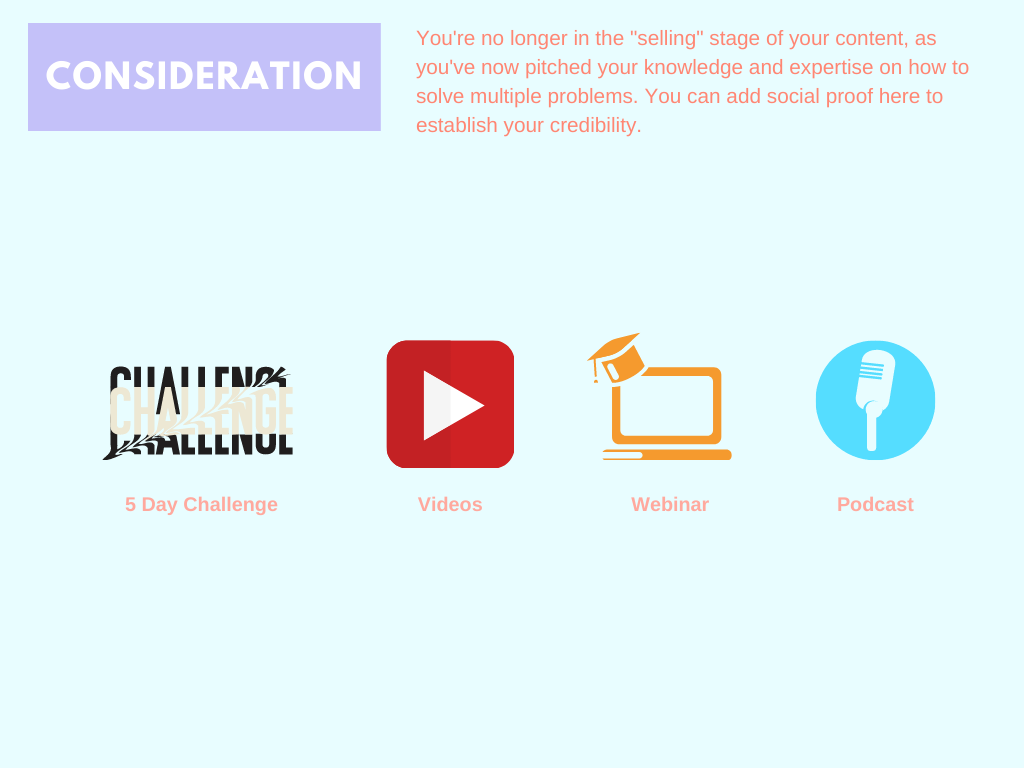
Creating content like challenges, webinars, videos, and podcasts will help you connect with your target market on a much more personal level and will ultimately convince them that you know what you're talking about.
If your meditation coaching helps people sleep better at night, you could create a video to offer a few tips on using your technique to help this quality of their sleep.
If your fitness program helps people stay in better shape, you could offer a 5-day fitness challenge to help people get into the habit of working out.
Who wouldn't want to buy from the best?
Action Item:
Brainstorm with your team and discuss what kind of content can you create to add more value to your customers?Stage 3: Decision
The final stage of the consumer journey map is the decision stage. In this stage, you are competing directly with your competitors. If you have done a good job marketing to customers in the consideration stage, then you will be ahead of other competition.Marketing in the decision stage is all about you! So go ahead and pitch your product or service with abandon. You want to show them your value, so consider sharing case studies, coupons, free consultation, or trial download, and putting together vendor & product comparison charts. These things will help persuade the buyers into selecting you.
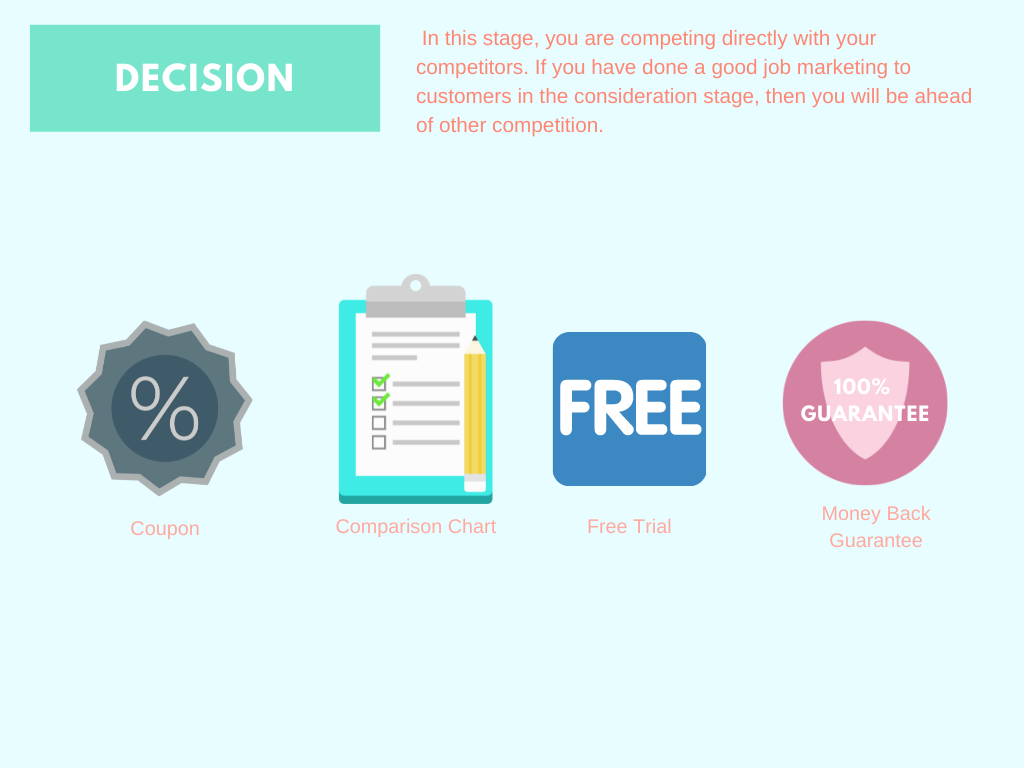
When you are absolutely confident in the quality of your product and feel that it is unrivaled in the marketplace, a strong offer such as a 30-day money-back guarantee should convince potential buyers to take the leap and make a purchase.
Action Item:
Brainstorm with your team and come up with an irresistible offer that could not be refused. (Make sure you're 100% confident about what you do)In Conclusion
People enter the customer journey for different reasons and we all have a unique set of needs so it's important that your marketing strategy caters to them no matter where they are in their process.The takeaway of a successful customer journey is to always offer values exceeding your potential customer's expectations. You are not the only option out there, and our job as a marketer is to show them why we are different and better than our competitors.


